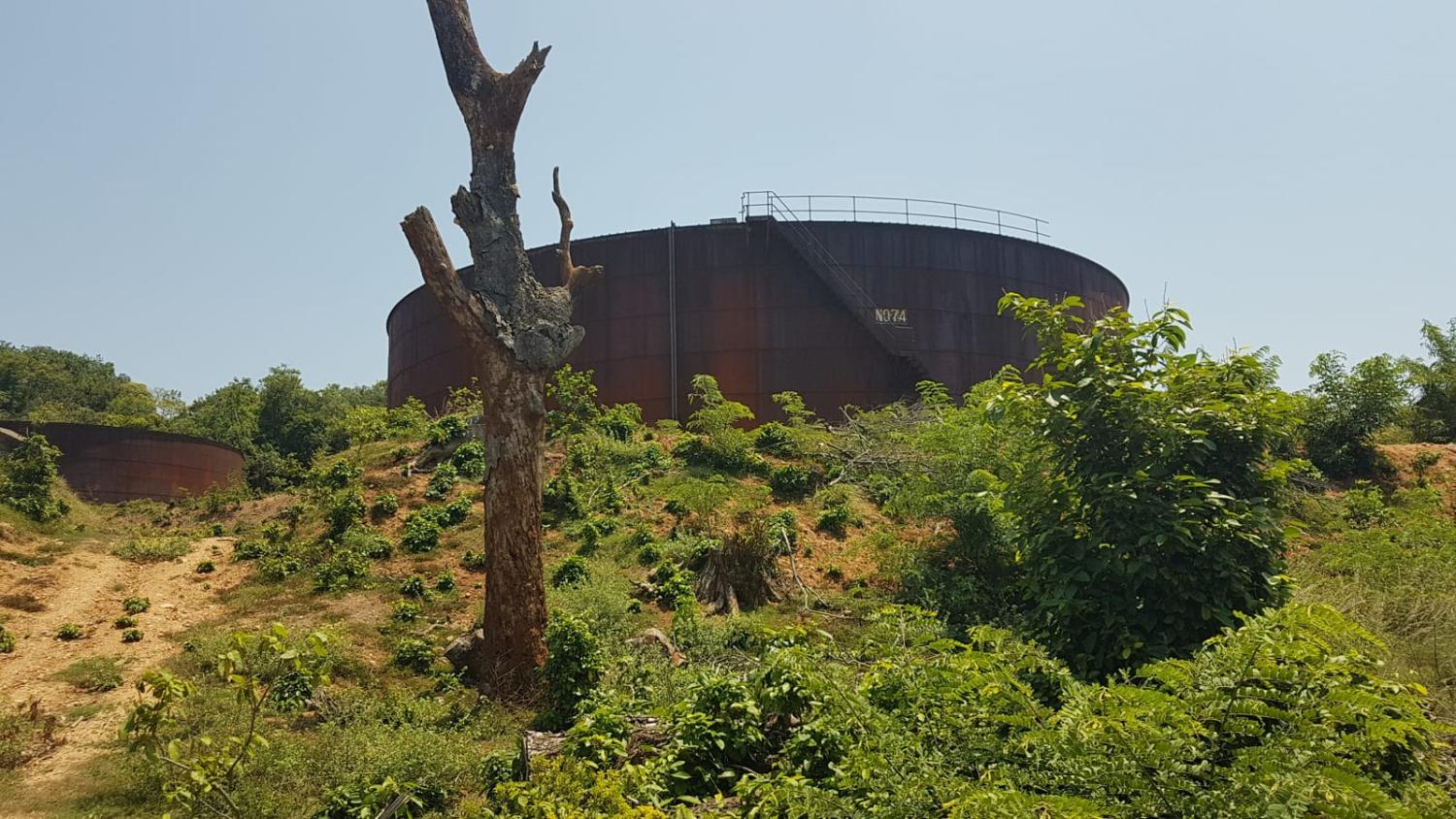India has recently moved to take effective control over the giant oil tank farm in Trincomalee, Sri Lanka. This marks a key step in integrating Sri Lanka into India’s national energy system, with important strategic consequences for Sri Lanka and potentially also for region.
The huge oil tank farm at Trincomalee in eastern Sri Lanka has regularly fascinated many strategic analysts. Trincomalee is one of the finest natural harbours in the world and long been touted as a potential naval base that could potentially dominate the northeast Indian Ocean.
The tank farm of around 100 massive oil tanks was built in the 1930s to sustain the British fleet in the Indian and Pacific Oceans. The Royal Navy stayed on after Sri Lanka’s independence, but was kicked out in 1957 in the wake of Britain’s disastrous Suez intervention. It left behind a large modern naval base and the tank farm with a total capacity of around 1.2 million tonnes of oil, connected with each other and with the port by a network of underground network of pipes.
Most of the tanks have since lain unused for 70 years or more, many of them hidden by the encroaching jungle. One tank was lost to a Japanese Kamikaze dive bomber in 1942, but the rest remain more or less serviceable. Although covered in a thick layer of rust, their construction with high-grade steel means that they can now be refurbished and put back to use.

India has long eyed Trincomalee port and its tank farm, wanting to keep adversaries out and use it for its own strategic purposes. Indeed, Trincomalee’s location on the east coast of Sri Lanka makes it a great location to dominate the Bay of Bengal and much of the northeast Indian Ocean.
In 1987, in the lead up to India’s intervention in the Sri Lankan civil war, Delhi secured a secret agreement that the tank farm would be jointly developed with India and couldn’t be used by any other country.
Around 20 years ago, the state-owned Indian Oil Company took over a small number of tanks. In the lead up to the Sri Lankan economic crisis in 2022, India extended its control over the tank farm. Indian Oil was given a 50-year lease over 14 tanks. An additional 61 tanks were given to a new company jointly owned by Indian Oil (49%) and Sri Lanka’s Ceylon Petroleum. India was also given an effective veto over the development of the remaining tanks.
The possible privatisation of Ceylon Petroleum to pay off Sri Lanka’s massive foreign debts may also create further opportunities to buy up the tank farm.
Indian Oil is now considering how it will use the tank farm. One option involves developing Trincomalee port as a regional “bunkering hub” to supply fuel for commercial vessels busy sea lanes nearby – a significant step in developing Trinco as a major regional port.
The most ambitious proposal would involve connecting the tank farm with a proposed new oil refinery at Nagapattinum, India, via an undersea pipeline that could carry some 3.5 million tonnes per annum of oil or petroleum between India and Sri Lanka.
This pipeline would have significant consequences for Sri Lanka. It would significantly enhance Sri Lanka’s energy security, but could also potentially cement Indian domination over Sri Lanka’s hydrocarbon sector. That could be offset by China’s plans to build a new $4.5 billion refinery at the Chinese-controlled port at Hambantota in the country’s south.
There is the option to make the pipeline connecting India with the tank farm to be bi-directional, meaning that products could flow in either direction. This would have considerable strategic implications, potentially turning the tank farm into a strategic hydrocarbon reserve for India and even the region, which could be used to help smooth oil price shocks – or profit from them.
The transition to renewable energy is also likely to further increase energy interdependence between Sri Lanka and its huge neighbour. Indeed, Sri Lanka is set to become a major producer and exporter of renewable energy to India.
The Sri Lanka government has set a goal to have 70% of its electricity generated by renewable energy sources by 2030. In December 2023, Australia’s United Solar Group was given approval for a US$1.7 billion 700MW solar plant, including 1500 MWh of storage. Floating solar panels will be installed on a dam in northern Sri Lanka, minimising its impact on farmland. The government recently also adopted an offshore wind roadmap, which identifies the shallow waters in the country’s north as a significant focus for future development.
These projects can help drive domestic development in the face of a faltering power system, but can also be a major export earner. In March 2024, the Sri Lankan government announced plans for a US$1.2 billion bidirectional undersea electricity cable that would link proposed new renewable energy projects in northern Sri Lanka. with the Indian city of Chennai.
Similar energy interconnectors are being developed between India and other neighbours. In 2023, India and Bangladesh announced a one million tonne per annum diesel pipeline as well as power transmission corridor. In February 2024, India signed a 25-year agreement to buy power from Nepalese hydro generation projects.
All these energy interconnection projects have the potential to enhance energy security of India and its neighbours and more generally underwrite greater economic interdependence between India and Sri Lanka and other South Asian neighbours. That has the potential to soften anxieties about India held by many people in Sri Lanka. Or it may just stoke further fears of domination.

